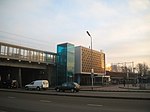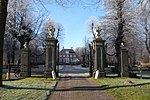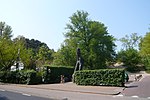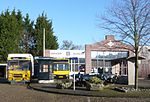Kareol
1908 establishments in the NetherlandsArt Deco architecture in the NetherlandsBloemendaalBuildings and structures completed in 1908Buildings and structures demolished in 1979 ... and 1 more
Demolished buildings and structures in the Netherlands

Kareol (1910-1979) was a huge Art Deco/Sezession style building on the Van Lennepweg in Aerdenhout, Netherlands. It was the largest house being built for a private owner in the Netherlands in the 20th century. It was demolished in 1979.
Excerpt from the Wikipedia article Kareol (License: CC BY-SA 3.0, Authors, Images).Kareol
Van Lennepweg, Bloemendaal
Geographical coordinates (GPS) Address Nearby Places Show on map
Geographical coordinates (GPS)
| Latitude | Longitude |
|---|---|
| N 52.3575 ° | E 4.5925 ° |
Address
Van Lennepweg 56
2111 HV Bloemendaal
North Holland, Netherlands
Open on Google Maps









